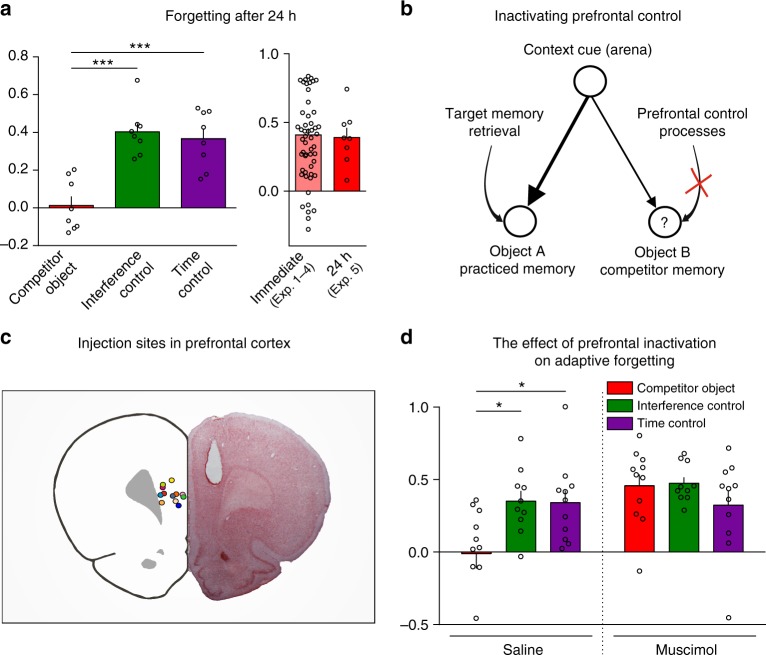Fig. 4.
Forgetting persists after 24 h and depends on prefrontal control processes. a (Left) Discrimination index means ± SEM during test performed 24 h after the end of practice in Experiment 5. ***p = 0.0001 (t21 = 5.64), d = 2.85 (RP vs. IC) and ****p < 0.0001 (t21 = 5.12), d = 2.59 (RP vs. TC), Bonferroni post hoc comparisons after repeated-measures one-way ANOVA, n = 8 animals. Individual values used to calculate the mean and SEM are presented as dots. (Right) Forgetting effect (expressed as the difference between interference control and competitor discrimination index) after 24 h compared to that observed on the immediate test in Experiments 1–4. b Inhibition dynamics normally assumed to impair the retention of object B should be disrupted by blockade of prefrontal control processes during practice. c Examples of 12 injection sites in the prefrontal cortex for the retrieval practice condition (left). Safranin-stained section showing an example of the cannula track reaching the prefrontal cortex (right). d Discrimination index means ± SEM during test for saline-injected or muscimol-injected rats. We found a significant interaction drug × condition. Muscimol impaired forgetting of the competitor object. *p = 0.022 (t29 = 2.89), d = 1.07 (RP vs. IC) and *p = 0.022 (t29 = 2.88), d = 1.04 (RP vs. TC). Bonferroni post hoc comparisons after a two-way repeated-measures ANOVA. Competitor object, n = 11 animals; interference control, n = 10 animals; time control n = 11 animals

